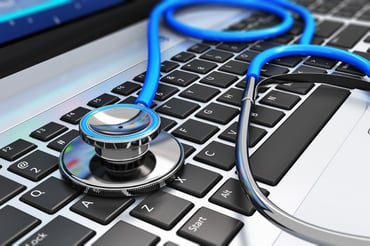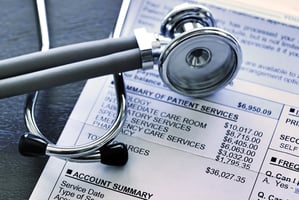Running a medical practice involves managing dozens of ongoing costs, and understanding them is...


Switching EHR systems isn’t just an IT project — it’s a transformation that affects every aspect of your practice.
Whether you're frustrated with an outdated electronic health records system, struggling with inefficient workflows, or facing hidden costs from your current platform, switching to a new EHR can feel overwhelming. And expensive.
But here’s the truth: Sticking with an inefficient system can cost your practice more because of:
Lost productivity
Low staff morale
Compliance risks
So, how can you make the transition without disrupting daily operations? The key is preparation.
Understanding what to expect and how to plan can make the transition more manageable. The following key steps help practices navigate the process, minimize disruptions, and fully leverage the benefits of modern EHR platforms.
Your EHR system should keep up with the ever-evolving world of healthcare. It’s no longer just about storing patient records — it’s also about streamlining workflows, improving patient care, and keeping your practice running smoothly. Here’s how upgrading your EHR can make a real difference:
Keep communication open between providers and patients with built-in messaging and reminders.
Make scheduling easier with automated appointment booking and notifications.
Get quick access to patient records to make informed decisions faster.
Reduce medical errors with automated alerts that flag potential issues before they happen.
Take the hassle out of billing and coding with automation that saves time and reduces errors.
Lighten the administrative workload so staff can focus on patients, not paperwork.
Improve revenue cycle management with better tracking and reporting.
Use data insights to spot trends and make smarter business decisions.
Use AI to automate scribing, predicting cancellations and no-shows, and handling other repetitive tasks.
Utilize embedded tools with the EHR for online scheduling, patient reminders, generating patient reviews, etc.
Protect patient information with top-tier encryption and access controls.
Stay compliant with HIPAA regulations without the stress.
Minimize the risk of data breaches with a system designed for modern cybersecurity threats.
Switching EHRs is daunting because this system affects every part of your practice. With careful planning and a proactive approach, you can minimize disruption and ensure a successful transition.
Here are six essential tips to guide you through the process:
Assemble an EHR Implementation Team
Prepare your IT infrastructure
Redefine your workflows
Train your staff for success
Plan for EHR data migration and conversion
Leverage AI
Select a dedicated team within your organization to oversee the new EHR’s implementation. This team should include representatives from different departments, such as:
Physicians: They ensure the system meets clinical needs.
Nurses: They help assess workflow efficiency.
Administrative staff: They provide insight into scheduling and documentation.
IT specialists: They ensure data security and system integration.
At least one team member should receive advanced training on the EHR platform to serve as an internal trainer for the rest of the staff. Having knowledgeable team members available can reduce disruptions and prevent inefficiencies when the electronic health system goes live.
Ensure your IT environment can support the new system. The last thing you want is to implement an electronic health system that slows the office down due to bandwidth issues or security vulnerabilities.
Internet bandwidth: Ensure your network can handle increased data flow for cloud-based EHR platforms.
Operating systems: Upgrade computers to at least the latest operating system for compatibility.
Security & compliance: Conduct a HIPAA security risk assessment to verify compliance. The HIPAA Security Rule and the Centers for Medicare and Medicaid Service EHR Incentive Program require this assessment, which you can do with a downloadable tool.
Licensing & hosting: Decide whether to use a cloud-based solution or host your own server. (Cloud-based is more cost-effective and popular.)
Device compatibility: Confirm that essential medical devices (EKG machines, spirometers, scanners, and printers) integrate with the new EHR. If your practice relies on fax communication, ensure your EHR solution integrates with an in-system fax service or supports a third-party fax server.
A new EHR will inevitably change how your practice operates. To ensure efficiency, revisit your existing workflows before going live with the new system.
Identify bottlenecks in your current process.
Map out each step of patient encounters, from check-in to billing.
Align workflows with your EHR software system for smoother operations.
Involve staff in discussions to ensure buy-in and address potential concerns.
Launch the new workflows on a small scale to identify and address issues before full-scale implementation.
Does each step improve the patient experience?
Does it enhance staff efficiency?
Is there a more streamlined way to complete this process?
Collaborate with your EHR management vendor to create workflows tailored to your practice’s needs. The right EHR solution should streamline operations, not complicate them.
Staff training is a crucial component of EHR replacement. Frustration and inefficiencies can arise without adequate preparation, leading to decreased productivity.
Provide role-specific training: Physicians, front-desk staff, and billing teams have different needs — offer separate sessions.
Use a third-party training provider: Consider external experts with experience in specialty-specific EHR solutions.
Offer hands-on practice: Allow staff to interact with the system before going live.
Set realistic training timelines: Balance training time with workload to avoid staff burnout. Schedule dedicated sessions well before the official go-live date.
Training ensures smoother adoption and reduces resistance to the new EHR. Investing in ongoing education ensures staff understand how to best use the system.
One of the most challenging aspects of switching EHR systems is ensuring accurate data migration and conversion. Data transfer can be complex, especially when moving from a legacy system.
Review your data migration options: Some vendors charge hefty fees for exporting data — research pricing in advance.
Decide what data to migrate: Not all data needs to be transferred; focus on patient demographics, clinical notes, and billing records. Carefully map data entry fields to avoid errors and ensure data integrity.
Secure data transfer: Work with IT professionals to ensure HIPAA-compliant, secure data mapping and transfer. Thoroughly test the migrated data to ensure accuracy and completeness.
If your practice handles billing within your electronic health records system, consider how you’ll transfer financial data and handle outstanding claims and payments during the transition.
Will the new EHR software system allow you to transfer accounts receivable (AR) balances?
Will you keep the old system active for AR resolution?
Does the system require new credentialing with insurers?
Data migration can take 4-6 months, depending on the complexity of your practice’s records and the compatibility of the EHR platform.
Beyond the core functionalities of an EHR, consider integrating AI-powered tools to streamline operations.
You can use AI to automate time-consuming administrative tasks, enhancing efficiency, improving patient care, and reducing staff burnout.
Billing & coding: AI reduces manual data entry, minimizes errors, and speeds up claims processing.
Patient records & information: AI-powered analytics identify health trends and optimize care recommendations.
AI scribes & assistants: Reduce documentation burden, allowing providers to focus on patient interactions.
Marketing & reputation management: Automate patient communication, reviews, and social media engagement.
Scheduling: Use AI predictive tools for managing cancellations & no-shows and automate appointment scheduling.
Switching to a new EHR system is an opportunity to enhance efficiency, improve patient care, and futureproof your practice. While the transition may seem daunting, careful planning, strong leadership, and the right technology can make the process smoother and more rewarding.
Your practice can minimize disruption and maximize the benefits of a modern EHR system by assembling a dedicated implementation team, optimizing workflows, thoroughly training staff, and ensuring secure data migration. Leveraging AI-driven tools streamlines operations, reduces administrative burden, and improves the patient experience.
Need expert guidance? A medical practice management team can provide tailored support for a seamless transition. Contact us today to take the next step toward a more efficient and effective medical office.


Running a medical practice involves managing dozens of ongoing costs, and understanding them is...

A Texas physician opened a new practice with everything in place – staff hired, patients scheduled,...

Your biller is three weeks behind on claims. Two no-shows went unfilled this morning. Your office...

Every minute spent chasing paperwork or fixing scheduling issues is time taken away from patients....

Most physicians didn’t go through years of training to become billing experts, HR managers, or IT...

If your medical practice overhead seems to be eating into your revenue, you’re not alone. Research...

Marketing and referral strategies are part of running a private practice. In Texas, they come with...
.jpeg?height=200&name=alone-bills-calculator-1253591%20(1).jpeg)
Opening a medical clinic is rewarding – but it comes with upfront costs. Lease deposits. Equipment....

Ending a relationship with a patient isn’t something providers take lightly. But when certain...

The Stark Law, officially called the Physician Self-Referral Law, is a federal rule that shapes how...
Leave a Comment